Welcome to Part 2 of our discussion! Together, we will continue learning about the men and women who revolutionized the world.
If you missed Part 1 of the discussion, find it here!
Charles Babbage (1791-1871)
Professions: Mathematician, philosopher, inventor, and mechanical engineer
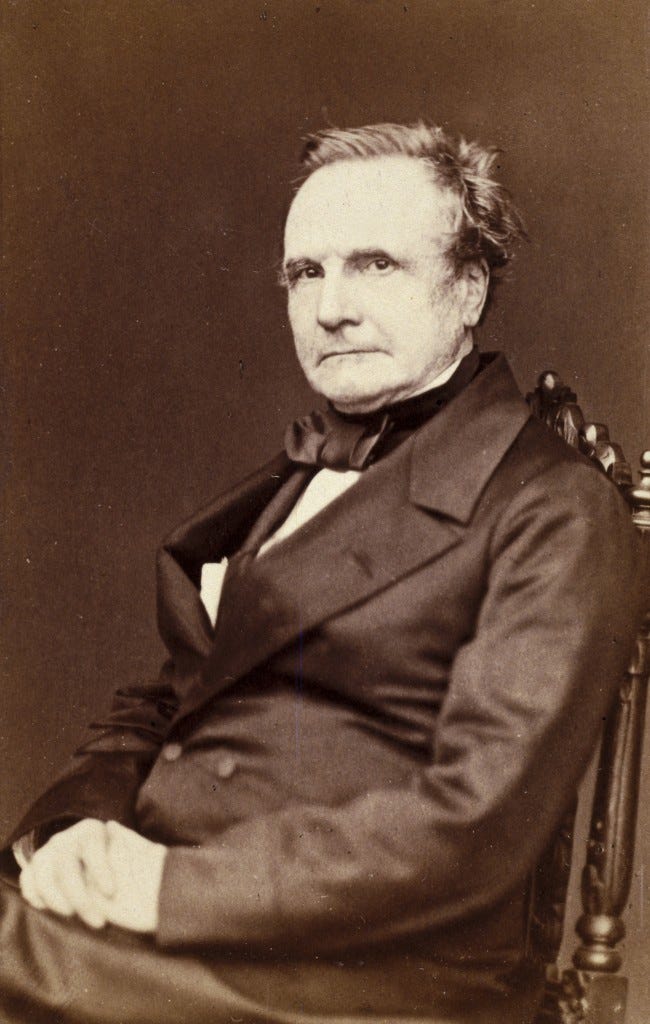
As a youth, Charles Babbage taught himself algebra and delved deep into continental mathematics. During his twenties, he specialized in the calculus of functions as a mathematician and embraced his passion for “calculating machinery.” One of his most famous inventions, the Difference Engine (1821), compiled mathematical tables. However, the success of this device challenged him to formulate a prototype that could perform any calculation.
Although unfinished, his Analytical Engine, first introduced in 1856, was the precursor to modern computers. He was also acclaimed for helping establish England’s postal system and conceiving “the first reliable actuarial tables.”1 Later in his life, Babbage served as Lucian chair of mathematics at Cambridge, supported the Association for the Advancement of Science and the Statistical Society, reformed scientific organizations, and called for an increase in governmental grants dedicated to the sciences.2
Ada Lovelace (1815-1852)
Professions: Mathematician, inventor, computer programmer/scientist, and poet
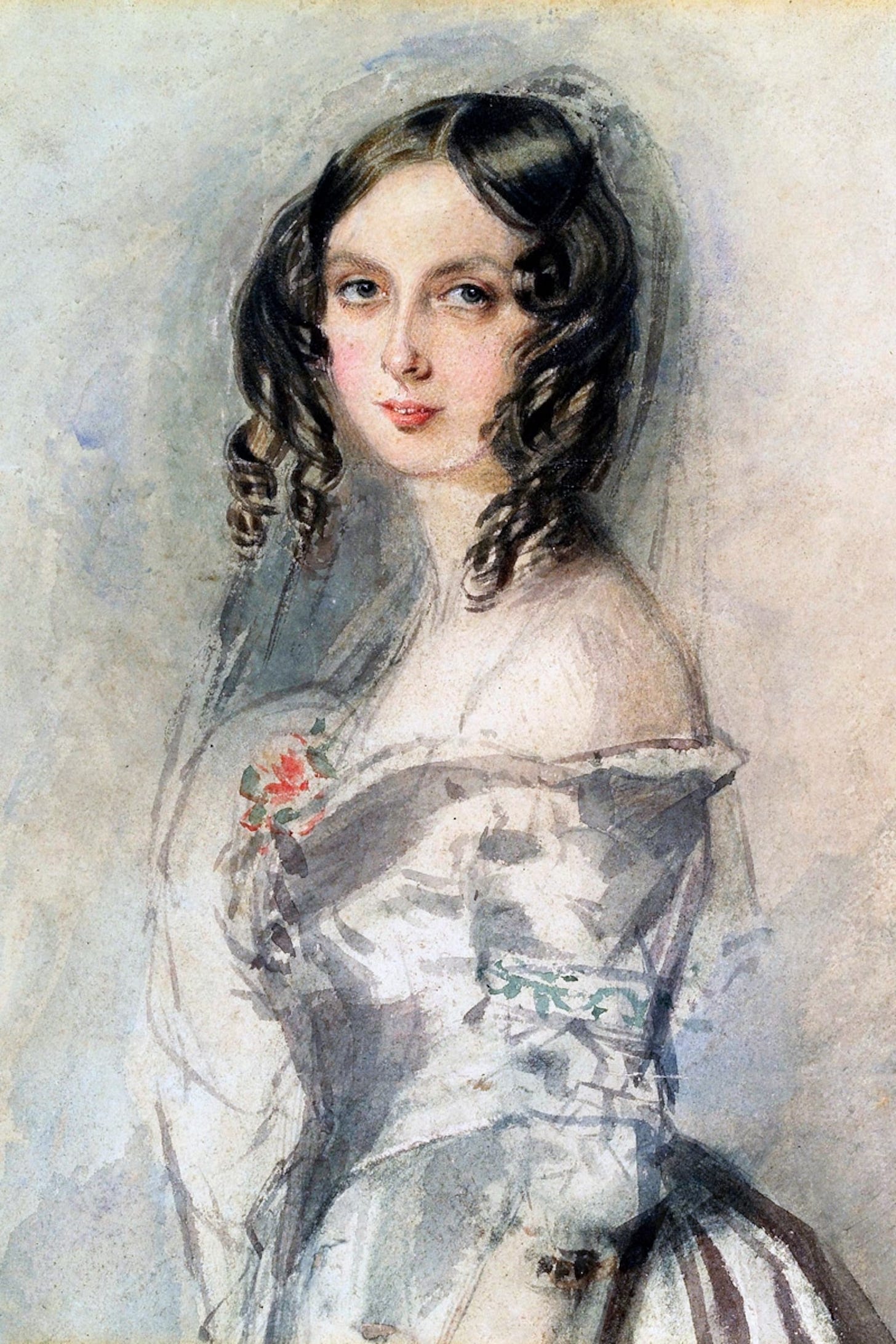
Augusta Ada King, Countess of Lovelace, also known as Ada Lovelace, was self-educated and aided by extraordinary private tutors. Although her father was the famed poet Lord Byron, he left England when she was a few weeks old. Her mother’s appreciation for mathematics also influenced her untraditional upbringing.
One of Lovelace’s educators was mathematician-logician Augustus De Morgan, the University of London’s first professor of mathematics. Additionally, Mary Somerville (another Renaissance woman mentioned in Part 1) introduced her to inventor and mathematician Charles Babbage. He developed the earliest prototype for an automatic digital computer, the “Analytical Engine,” which inspired Lovelace to write its program. Credited as the world’s first computer programmer, she paved the way for many women in later decades.
Thomas Edison (1847-1931)
Professions: Inventor, engineer, entrepreneur, film director/producer, writer, physicist, mathematician, and telegraphist
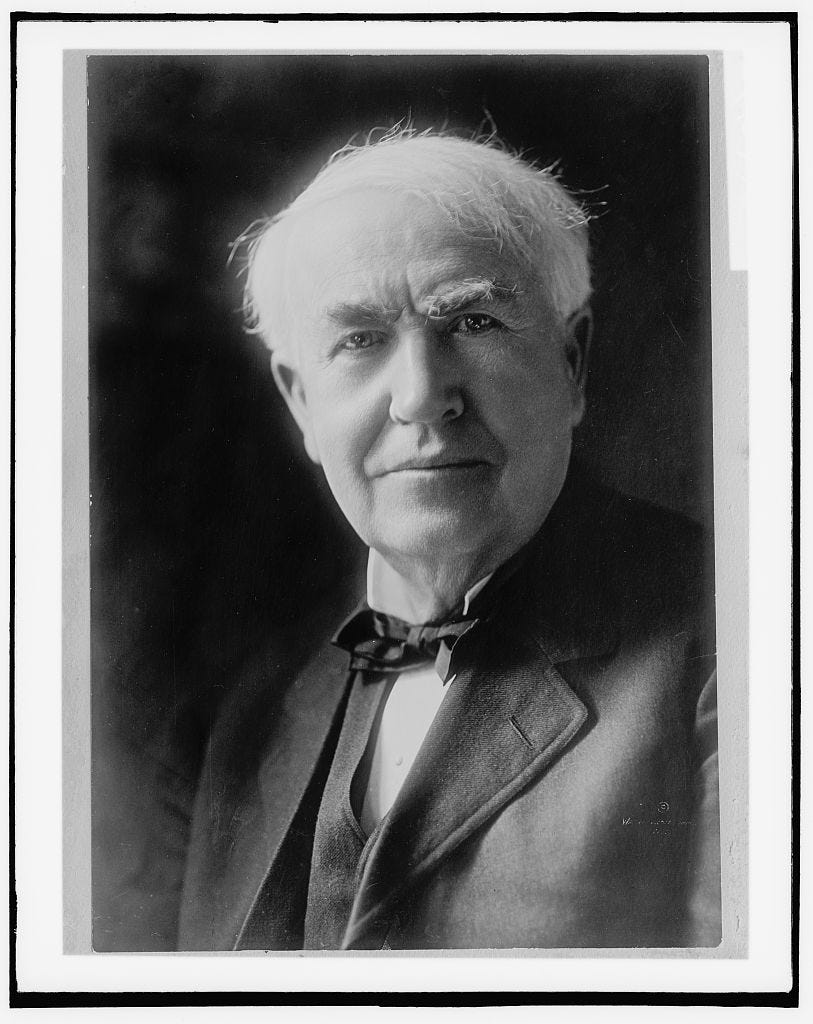
Without Thomas Alva Edison, the modern world would look quite different. His inventions include the incandescent light bulb, phonograph, and motion picture camera. In addition to acquiring 1,093 patents, he improved the telegraph and telephone.
According to Edison, his mother’s influence shaped his later successes. She believed in his rare abilities and tutored him at home, encouraging his fascination for mechanics and chemistry. At 12, he nearly lost all his hearing, but he never viewed this incident as a hindrance. He learned telegraphy and became an independent entrepreneur. As Edison elevated the telegraph, he gained a profound understanding of chemistry, providing a firm foundation for the creation of his electric pen and mimeograph. Upon selling a design and earning more than $100,000, he established a laboratory and machine shop in Menlo Park, New Jersey. This was the birthplace of many spectacular ideas including the carbon-button transmitter, phonograph, and incandescent light bulb.3
After the death of his first wife, Edison remarried and built an even larger research facility which “included a machine shop, phonograph and photograph departments, a library, and ancillary buildings for metallurgy, chemistry, woodworking, and galvanometer testings.”4 A meeting with Eadweard Muybridge introduced him to the zoopraxiscope and expanded his vision of entertainment’s future. With the help of his loyal associate William K. L. Dickson, Edison unveiled the world’s first motion picture camera (Kinetograph) as well as a motion picture peephole viewer (Kinetoscope). His other contributions like alkaline storage batters enriched the nineteenth and twentieth centuries.
Nikola Tesla (1856-1943)
Professions: Inventor, physicist, mechanical/electrical engineer, and futurist
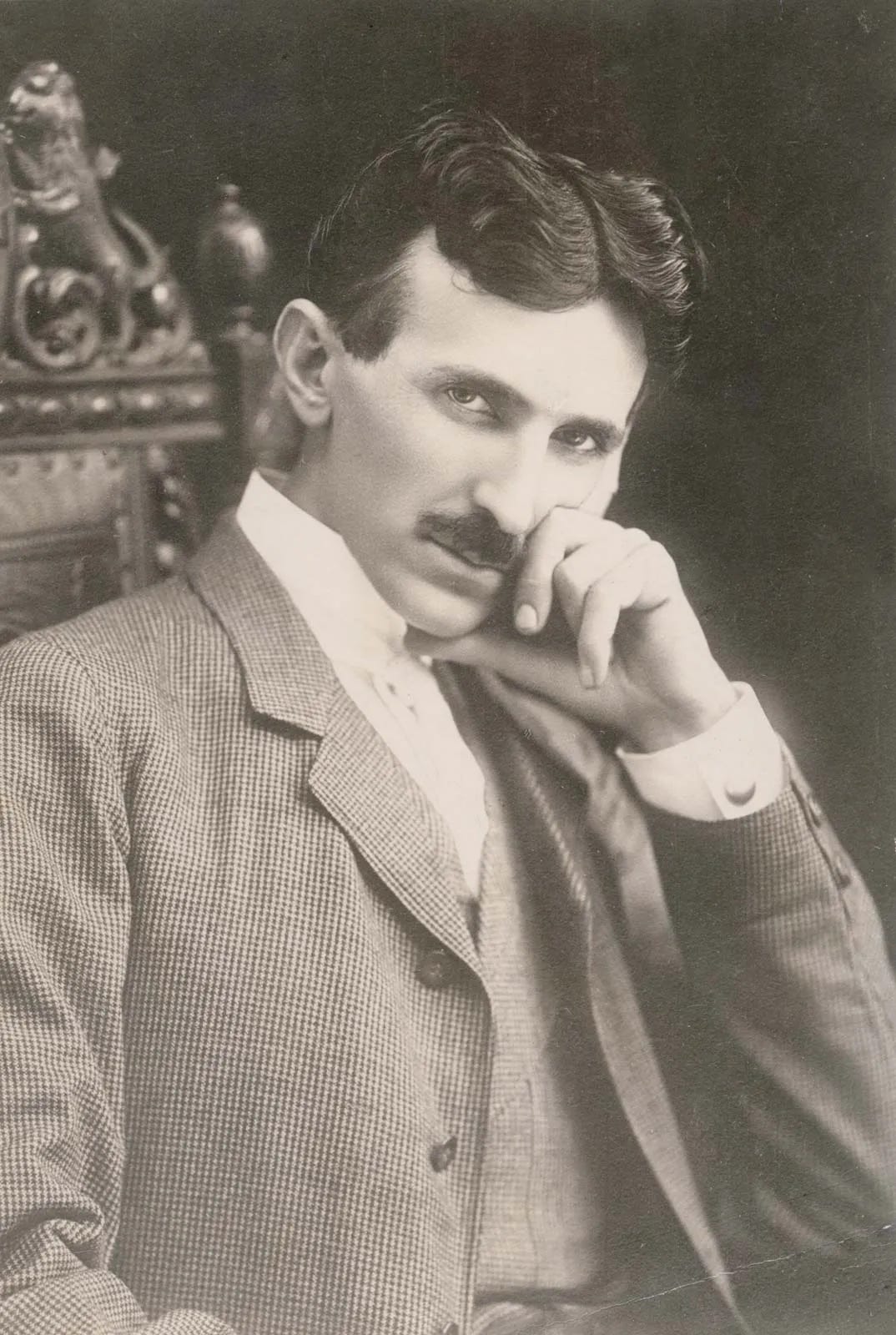
Serbian-American inventor and engineer Nikola Tesla received about 300 patents for his miraculous inventions. Inspired by his mother’s original household appliance contraptions, Tesla founded alternating current (AC) electricity, the first modern power station, and the Tesla Coil for radio technology. He also modified and improved upon existing technologies which manifested as the shadowgraph (another name for x-rays) and neon lamp.5 Although he studied across Europe, he ventured to America to advance his discoveries. He partnered with Thomas Edison for a brief period, but when he never received compensation for his work, Tesla forged his own path.
Entrepreneur George Westinghouse funded his early endeavors including the induction motor, which “later became the main standard for power systems.”6 A tragic fire destroyed his New York lab along with most notes, designs, patents, and blueprints, but wealthy investor J.P. Morgan helped him rebuild. Tesla dedicated his efforts to building a “global, wireless communication system transmitted through a large electrical tower that would enable information sharing and provide free energy throughout the world.”7 Two years before his rival Guglielmo Marconi, he demonstrated radio communication. Unfortunately, the Italian inventor’s widespread impact and financial backers, Andrew Carnegie and Thomas Edison, forced Tesla to abandon the project.
Albert Einstein (1879-1955)
Professions: Theoretical physicist, mathematician, philosopher, inventor, writer, human rights activist, and teacher
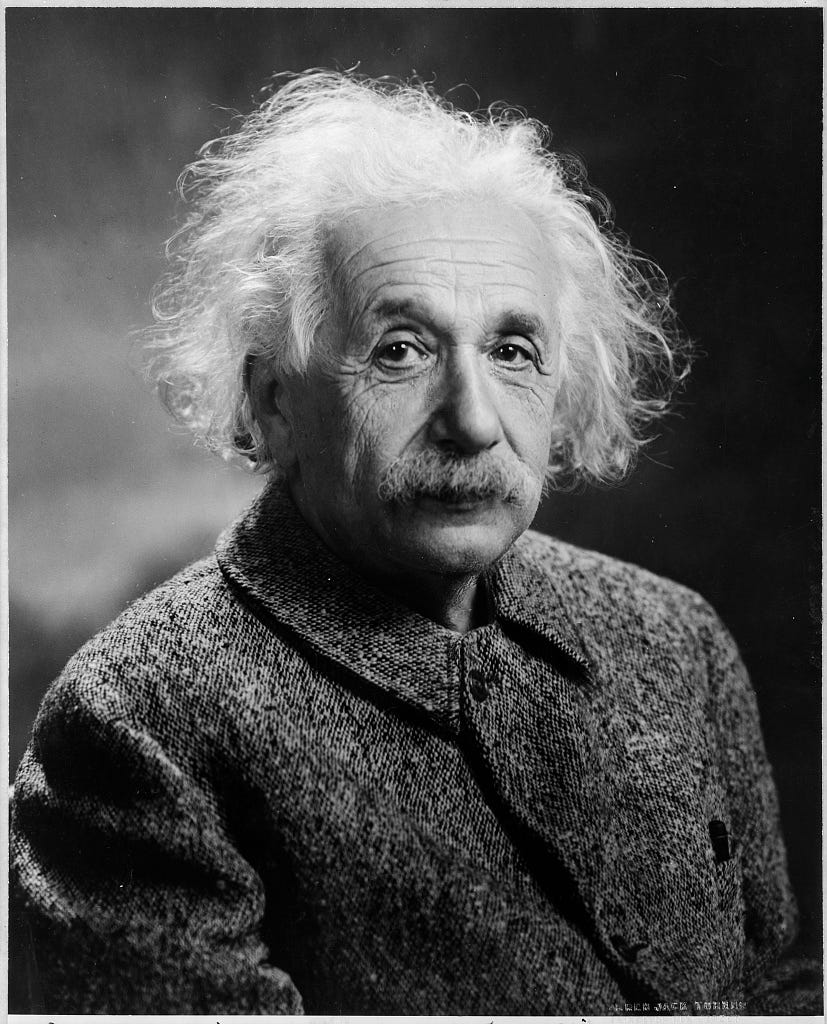
German-born Albert Einstein was first introduced to science, specifically the nature of light, by a family friend and medical student Max Talmud. In 1901, he obtained his first degree as a physics and mathematics teacher from the Swiss Federal Polytechnic School in Zurich. His job search was fruitless, so he accepted a clerk position in the Swiss patent office. Einstein’s “miracle year” occurred in 1905 when he earned his doctorate and published four monumental papers. The first applied the quantum theory to light and the second “offered the first experimental proof of the existence of atoms.”8 He followed up his third paper, which outlined the mathematical theory of special relativity, with a fourth that emphasized the connection between the relativity theory and the equation E = mc2 (energy equals the product of mass and the speed of light squared).
Lauded by Max Planck, the father of quantum theory, Einstein rapidly ascended in the academic world, accepting prestigious university professorships in Zurich and Prague. His general theory of relativity was finally completed in 1915, but he received the Nobel Prize for Physics in 1921 for his research on the photoelectric effect. When dictator Adolf Hitler rose to power, he moved to the United States in 1933 and served as a professor of theoretical physics at Princeton. Aside from science, Einstein contemplated religious doctrines, participated in social justice movements, and advocated for global peace.
Hedy Lamarr (1914-2000)
Professions: Actress, model, producer, writer, musician, inventor, and engineer
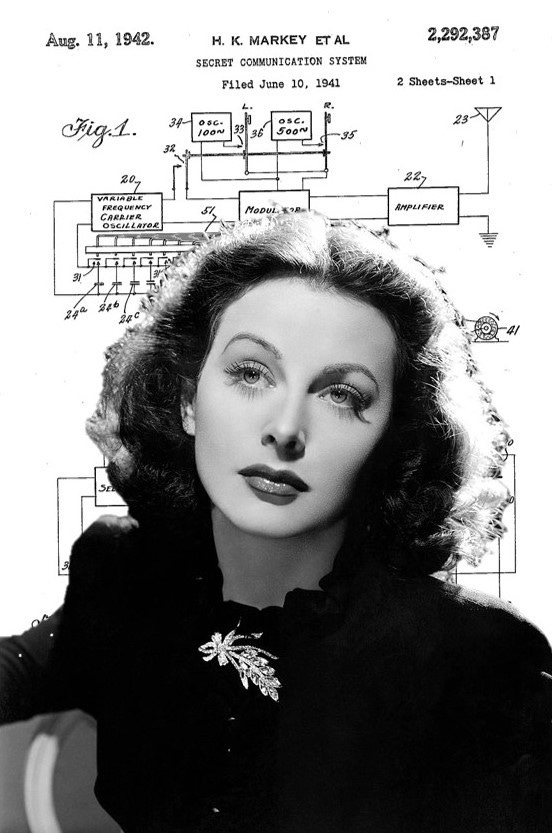
Austrian-American actress Hedy Lamarr was a prolific artist, inventor, and engineer. While her father introduced her to the inner workings of machines, her mother encouraged her talent for piano, ballet, and languages. Director Max Reinhardt noticed Lamarr’s beauty at 16, but Louis B. Mayer of MGM Studios altered the course of her life by opening Hollywood’s golden gates.
She filmed several motion pictures and was admired as the ultimate “femme fatale.” In between takes, she experimented and researched, even designing improvements for Howard Hughes’ airplanes. Aside from producing soda tablets for water, Lamarr also upgraded the stoplight. In 1940, she bonded with George Antheil, another innovative filmmaker with a penchant for science. Together, they invented a new communication system during World War II for Allied torpedos, which “minimized the jamming of radio signals.”9 Although the device was never utilized during the global conflict, it “would one day form the basis for today’s WiFi, GPS, and Bluetooth” technologies.10
Mae Jemison (1956- )
Professions: Astronaut, doctor, engineer, physicist, actress, and author
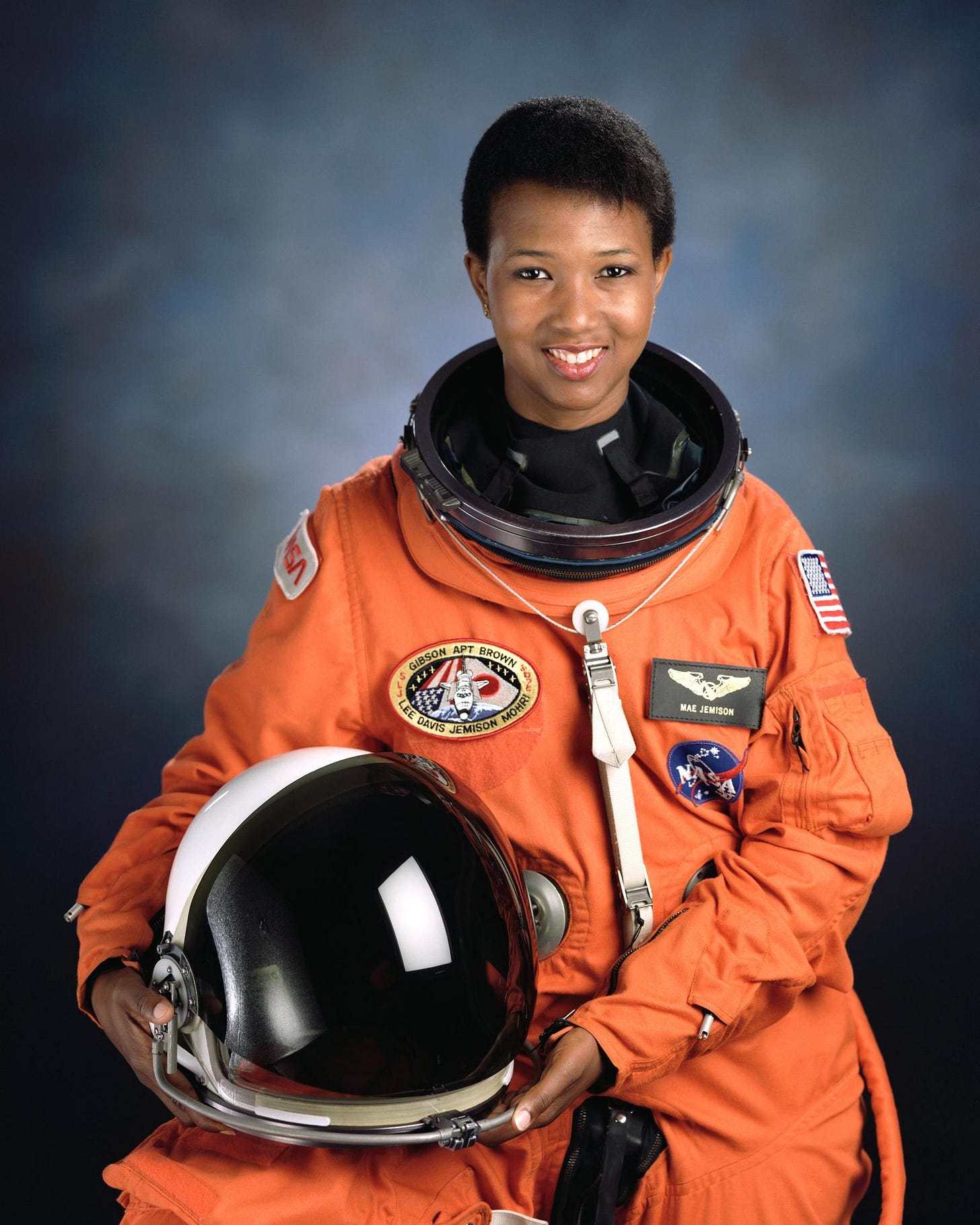
Mae Jemison is a modern-day hero and polymath. Although born in Alabama, she was raised in Chicago, Illinois and dreamt of space travel. After graduating from high school at 16, she studied chemical engineering along with African and African-American studies at Stanford University. Jemison earned her medical degree from Cornell Medical School, practiced general medicine, and spent two years in the Peace Corps. Not to mention, she is fluent in Russian, Japanese, and Swahili!
In 1987, Jemison applied to NASA’s astronaut program and embarked on her initial mission in 1989, making her the first African American woman in space. After her six-year tenure, she opened a consulting company, taught environmental studies at Dartmouth College, appeared on Star Trek: The Next Generation, created a non-profit organization, and wrote a children’s book. Currently, she sits on the board of directors for several organizations and spearheads “the 100 Year Starship project through the United States Defense Advanced Research Projects Agency (DARPA).”11 She is a pioneer in every sense of the word.
Are you a Renaissance man or woman? I believe everyone can be a multi-hyphenate. It simply takes time to discover and embrace one’s unique gifts.
Don’t be afraid to venture beyond your comfort zone and pursue seemingly unrelated subjects. You never know what answers will be revealed in the process!








